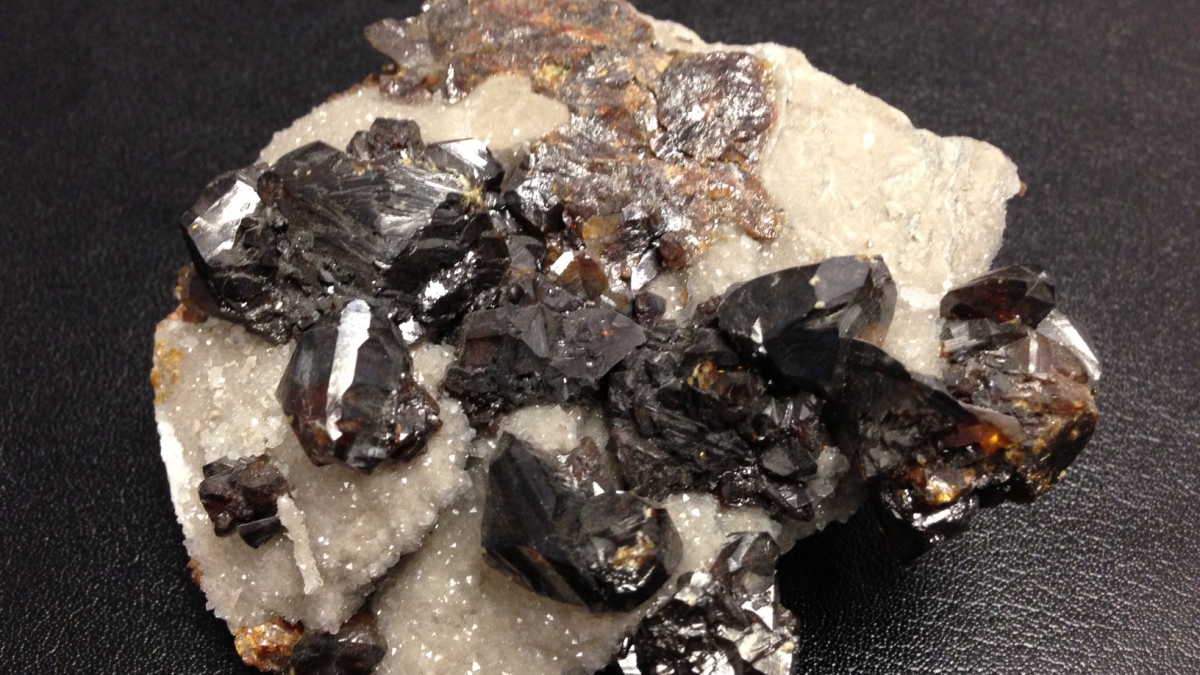Mineral magic? Common mineral capable of making, breaking bonds

Reactions among minerals and organic compounds in hydrothermal environments are critical components of the Earth’s deep carbon cycle. They provide energy for the deep biosphere, and may have implications for the origins of life. However, very little is known about how minerals influence organic reactions. A team of researchers from Arizona State University have demonstrated how a common mineral acts as a catalyst for specific hydrothermal organic reactions – negating the need for toxic solvents or expensive reagents.
At the heart of organic chemistry, also known as carbon chemistry, is the covalent carbon-hydrogen bond (C-H bond) – a fundamental link between carbon and hydrogen atoms found in nearly every organic compound.
The essential ingredients controlling chemical reactions of organic compounds in hydrothermal systems are the organic molecules, hot pressurized water and minerals; but a mechanistic understanding of how minerals influence hydrothermal organic reactivity has been virtually nonexistent.
The ASU team set out to understand how different minerals affect hydrothermal organic reactions and found that a common sulfide mineral (ZnS, or Sphalerite) cleanly catalyzes a fundamental chemical reaction: the making and breaking of a C-H bond.
Their findings are published in the July 28 issue of the Proceedings of the National Academy of Sciences. The paper was written by a transdisciplinary team of ASU researchers that includes Jessie Shipp (2013 doctorate in chemistry and biochemistry), Ian Gould, Lynda Williams, Everett Shock and Hilairy Hartnett. The work was funded by the National Science Foundation.
“Typically you wouldn’t expect water and an organic hydrocarbon to react. If you place an alkane in water and add some mineral, it’s probably just going to sit there and do nothing,” explains Shipp. “But at high temperature and pressure, water behaves more like an organic solvent, the thermodynamics of reactions change and, suddenly, reactions that are impossible on the bench-top start becoming possible. And it’s all using naturally occurring components at conditions that can be found in past and present hydrothermal systems.”
A mineral in the mix
Previously, the team had found they could react organic molecules in hot, pressurized water to produce many different types of products, but reactions were slow and conversions low. This work, however, showed that in the presence of sphalerite, hydrothermal reaction rates increased dramatically, the reaction approached equilibrium and only one product formed. This very clean, very simple reaction was unexpected.
“We chose sphalerite because we had been working with iron sulfides and realized that we couldn’t isolate the effects of iron from the effects of sulfur. So we tried a mineral with sulfur, but not iron. Sphalerite is a common mineral in hydrothermal systems, so it was a pretty good choice. We really didn't expect it to behave so differently from the iron sulfides,” says Hartnett, an associate professor in the School of Earth and Space Exploration and the Department of Chemistry and Biochemistry in the College of Liberal Arts and Sciences at ASU.
This research provides information about exactly how the sphalerite mineral surface affects the breaking and making of the C-H bond. Sphalerite is present in marine hydrothermal systems (such as black smokers), and has been the focus of recent origins-of-life investigations.
For their experiments, the team needed high pressures (1,000 bar, or nearly 1,000 atm) and high temperatures (300 degrees Celsius) in a chemically inert container. To get these conditions, the reactants (sphalerite, water and an organic molecule) are welded into a pure gold capsule and placed in a pressure vessel, inside a furnace. When an experiment is done, the gold capsule is frozen in liquid nitrogen to stop the reaction, opened and allowed to thaw while submerged in dichloromethane to extract the organic products.
“This research is a unique collaboration because Dr. Gould is an organic chemist, and you combine him with Dr. Hartnett, who studies carbon cycles and environmental geochemistry, Dr. Shock, who thinks in terms of thermodynamics and about high temperature environments, and Dr. Williams, who is the mineral expert, and you get a diverse set of brains thinking about the same problems,” says Shipp.
Hydrothermal organic reactions affect the formation, degradation and composition of petroleum, and provide energy and carbon sources for microbial communities in deep sedimentary systems. The results have implications for the carbon cycle, astrobiology, prebiotic organic chemistry and, perhaps even more importantly, for "Green Chemistry," a philosophy that encourages the design of products and processes that minimize the use and generation of hazardous substances.
“This C-H bond activation is a fundamental step that is ultimately necessary to produce more complex molecules – in the environment those molecules could be food for the deep biosphere, or involved in the production of petroleum fuels,” says Hartnett. “The green chemistry side is potentially really cool since we can conduct reactions in just hot water with a common mineral that ordinarily would require expensive or toxic catalysts, or extremely harsh acidic or oxidizing conditions.”